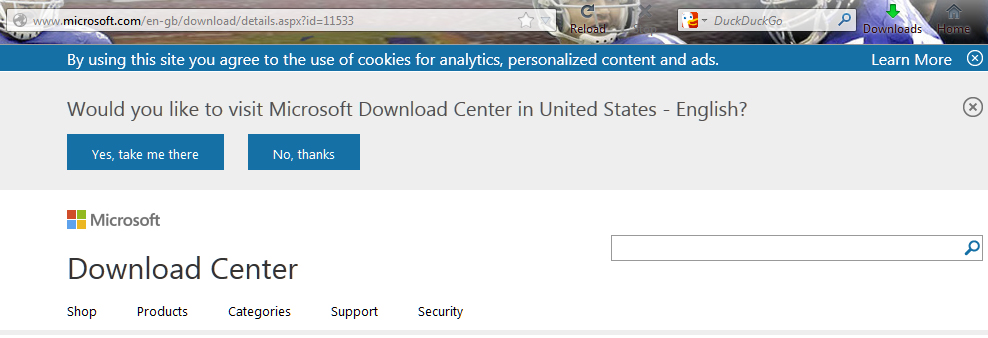The difference between the privacy laws in the US and EU can be summed up in couple of sentences.
In the US, the privacy laws are sectoral based and they do not apply to all the industries. On the other side of the pond, the EU have privacy laws that applicable to all industries, including foreign entities.
The difference between the privacy laws requires US companies to comply with EU privacy laws, if and when they do business in the EU countries. This can result in some interesting changes to their websites, when EU citizens visit the company pages.
Take for example this Microsoft website link for people in Great Britain:
Microsoft Download Site for Great Britain
If you click on the link, you’ll see this warning in your browser:

The EU privacy laws requires MS, and pretty much everyone who does business in the EU, to display this message:
By using this site you agree to the use of cookies for analytics, personalized content and ads.
One can select “No, thanks”, the end user stays on the English-GB site, and end user’s browsing activities are tracked.
The warning also ask, if you’d prefer US-English website; let’s take the same Microsoft website link for people in the US:
Microsoft Download Site for the US
If you click on the link, you’ll see no warning in your browser:
End user browser activity tracking is a given within the US, no permission is required…
That pretty much sums up the difference between the EU and US privacy laws on a personal level. Basically within the EU, people need to opt-in for allowing collection of their data, while in the US people by default are opted-in and would need to opt-out, if they object.
At either side of the pond, browser plugins or add-on is necessary to block tracking end user browser activities. For example, visiting either of the websites with the Ghostery plugin active, it’ll block the MS tracking:
PS: This blog looked at Microsoft website links for examples; other US companies have similar website redirection for EU countries.


